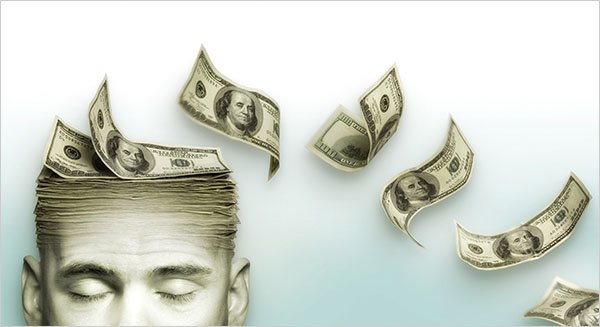Incentives for September 2010. They're Lower, But Only Just

You’ve probably digested September’s sales figures. Now comes the paying the bill part. Quite literally. Edmunds (via Newswire) has broken out the incentive figures.Industry average for September 2010 stands at $2,576 (lower than August 2010, which stood at $2,701 for the month).
Only 2 makers of the main 6 were below that figure. Can you guess who they were? That’s right, Toyota and Honda. Their average incentive was $2,212 and $1,755, respectively. These represent small increases from August 2010 where Toyota spent an average of $2,193 per vehicle in incentives and Honda, $1,731. Nissan spent an average of $2,874 per vehicles in September, which was lower than the August figure of $2,971 (which was a record for Nissan). General Motors spent the most in incentives averaging $3,430 per vehicle. This also was much lower than August where GM spent $3,820 per vehicle, on average. But before you start shouting “It’s high because they have to get rid of old brands’ stock!” don’t be so sure. In September 2010, GM sold 163 Hummers, 15 Saturns and 8 Pontiacs. Hardly market distorting volumes, when you consider GM sold 12,620 Cadillacs, 121,479 Chevrolets, 25,995 GMC’s and 12,875 Buicks.
The next highest was Ford by a whisker, spending an average of $3,052, which was marginally lower than August’s figure of $3,100. However, Ford can play the “dead brand market distorting” card, because in September, 6,306 Mercuries were sold. Quite a lot of cars for a dead brand.
Now we come to Chrysler, who spent $3,036 per vehicle, on average. This was lower than their August amount of $3,270 per vehicle. Couple their abysmal September 2009 figures with the high incentives and it’s no wonder that Chrysler posted a massive sales gain in September,
Of course, in a relatively strong month, it should be normal that incentives go down as demand goes up. But the question makers have to ask themselves is this:
Now that the price of oil is on the rise and economists saying that the United States’ recovery is a fantasy, will this growth last? Or is another correction (A.K.A Carmageddon II) on its way?

More by Cammy Corrigan
Latest Car Reviews
Read moreLatest Product Reviews
Read moreRecent Comments
- Jkross22 Sure, but it depends on the price. All EVs cost too much and I'm talking about all costs. Depreciation, lack of public/available/reliable charging, concerns about repairability (H/K). Look at the battering the Mercedes and Ford EV's are taking on depreciation. As another site mentioned in the last few days, cars aren't supposed to depreciate by 40-50% in a year or 2.
- Jkross22 Ford already has an affordable EV. 2 year old Mach-E's are extraordinarily affordable.
- Lou_BC How does the lower case "armada" differ from the upper case "Armada"?
- TMA1 Question no one asked: "What anonymous blob with ugly wheels will the Chinese market like?"BMW designers: "Here's your new 4-series."see also: Lincoln Nautilus
- Ivor Honda with Toyota engine and powertrain would be the perfect choice..we need to dump the turbos n cut. 😀


































Comments
Join the conversation
Hmmm. There doesn't appear to be universal agreement on incentive amounts: Automotive News quotes TrueCar with the following: Ford $2797 (up 7.4% from 2009) Chrysler $3787 (down 23%) GM $3404 (down 11%) Who has it right? The Chrysler and GM figures are quite different from Edmunds.
I think that overall the entire US economy has entered a phase that can only be described as "hallucinogenic". I say that because it's very hard to give a real description of how the economy overall is performing, now *how* it is performing at a basic level, period. To give some clarity I will refer to my client base which covers everything from non-profits to multi-billion dollar international companies. Across the board NOBODY can give me a clear picture or anything resembling a forecast. Two year forecasts have been thrown out and a lot of these guys are down to six month forecasts that are adjusted every 30 days. But what I can say is that the general sentiment as a result of this extremely cloudy, foggy picture is this: lack of confidence. There is absolutely zero confidence by business owners, c-level executives or shareholders in the present economy. The prevailing attitude is a bunker mentality, preparing for the next shoe to drop. Actually, I think that this phase is far more nerve wracking than the initial phases in 2008 - mid 2009. I think it is this way because the government failed to purge the system of the bad debts, bad actors and bad investments, and these are all still out there, festering and growing like tumors. Toss on top of that extraordinarily cheap credit and what I am seeing and hearing is everyone just waiting for the next leg down. Personally, I think that we've stabilized over the last year but I agree, that was only the first stage of the debt-deflation game. In particular if the price of oil spikes again because of a true recovery or because petroleum becomes the next market where investors attempt to seek a higher rate of return, we could see the entire recovery shot to hell within a matter of months. A sustained $100/bbl of oil for 60 days or so will be a severe drag on growth because consumers have become very price sensitive. Combine this with looming tax increases across states and municipalities, changes to the health care laws, wages that are stagnant and investment incomes that are shrinking and you've got an extraordinarily uncertain period ahead of us.